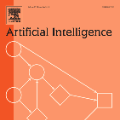Large language models (LLMs) hold substantial promise for clinical decision support. However, their widespread adoption in medicine, particularly in healthcare, is hindered by their propensity to generate false or misleading outputs, known as hallucinations. In high-stakes domains such as women's health (obstetrics & gynaecology), where errors in clinical reasoning can have profound consequences for maternal and neonatal outcomes, ensuring the reliability of AI-generated responses is critical. Traditional methods for quantifying uncertainty, such as perplexity, fail to capture meaning-level inconsistencies that lead to misinformation. Here, we evaluate semantic entropy (SE), a novel uncertainty metric that assesses meaning-level variation, to detect hallucinations in AI-generated medical content. Using a clinically validated dataset derived from UK RCOG MRCOG examinations, we compared SE with perplexity in identifying uncertain responses. SE demonstrated superior performance, achieving an AUROC of 0.76 (95% CI: 0.75-0.78), compared to 0.62 (0.60-0.65) for perplexity. Clinical expert validation further confirmed its effectiveness, with SE achieving near-perfect uncertainty discrimination (AUROC: 0.97). While semantic clustering was successful in only 30% of cases, SE remains a valuable tool for improving AI safety in women's health. These findings suggest that SE could enable more reliable AI integration into clinical practice, particularly in resource-limited settings where LLMs could augment care. This study highlights the potential of SE as a key safeguard in the responsible deployment of AI-driven tools in women's health, leading to safer and more effective digital health interventions.
翻译:暂无翻译




